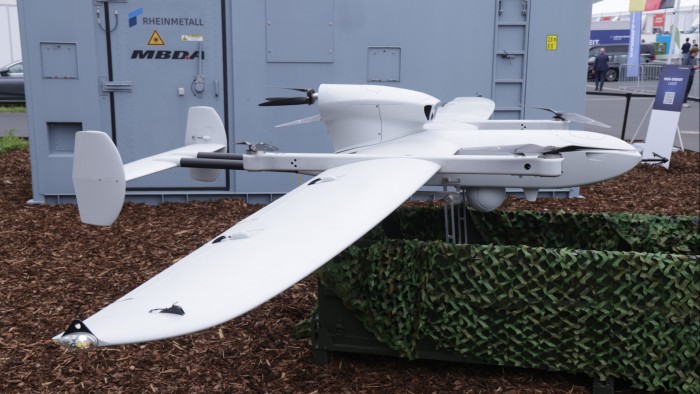Unlock the Editor’s Digest for free
Roula Khalaf, Editor of the FT, selects her favourite stories in this weekly newsletter.
European plans to fund military spending are proliferating at speed. Anticipating a reduced contribution from the US, the EU is considering a €500bn special purpose vehicle, funded through sovereign-guaranteed bonds. The bloc is also planning to divert a chunk of its common budget to defence. European Nato members are discussing a step-up in targeted spend, from 2 to 3 per cent of GDP. That is still well short of the 5 per cent US president-elect Donald Trump wants them to cough up.
While any new pots of cash will be good news for Europe’s defence sector, which has been on a tear since Russia invaded Ukraine in February 2022, there are caveats. The bounty will not be evenly spread, with state-owned group or manufacturers of specialised kit capturing much of it. Buckled supply chains create problems at the top. And fast-evolving technology is changing the landscape of warfare.
The EU’s Act in Support of Ammunition Production is illustrative. It handed out €500mn to boost production to an annual 2mn shells from the end of next year. Nearly half went to state-owned and private companies, Jefferies estimates; of the remainder Germany’s Rheinmetall took a fifth, the UK’s Chemring 13 per cent and Thales 2 per cent.
Warfare and national security are only part of the picture. Years of peacetime under-investment means there is a lot of catching up to do on upgrading kit while supply chains, fractured by deglobalisation, are being reconfigured.
It does not help that industry supply chains are made up of sprawling networks of small and medium-sized enterprises. Take Italian shipbuilder Fincantieri, which works with more than 7,000 SMEs. Such companies lack the robust balance sheets of the primes and are often last in line for loans and other financing. That makes it difficult for them to expand production capacity.
Besides, a big step-up in European funding cannot be banked on. For one, sickly economies and budgetary pressures will weigh on efforts to expand Nato spending. Already, a quarter of Nato members fail to meet the 2 per cent target. Biggest spender Poland, contributing 4 per cent, and targeting 4.7 per cent in 2025 also has one of the smallest denominators; economic output is roughly half that of Spain, which supplies just 1.3 per cent of GDP on Nato’s 2024 estimates.
The UK ranks highly, pledging 2.5 per cent next year, but that still falls well short of its own internal projections that call for a 3.6 per cent spend — more than half as much again as is currently the case.
The will to increase spending and modernise military capabilities is strong; reaching targets will prove tougher.
Read the full article here

